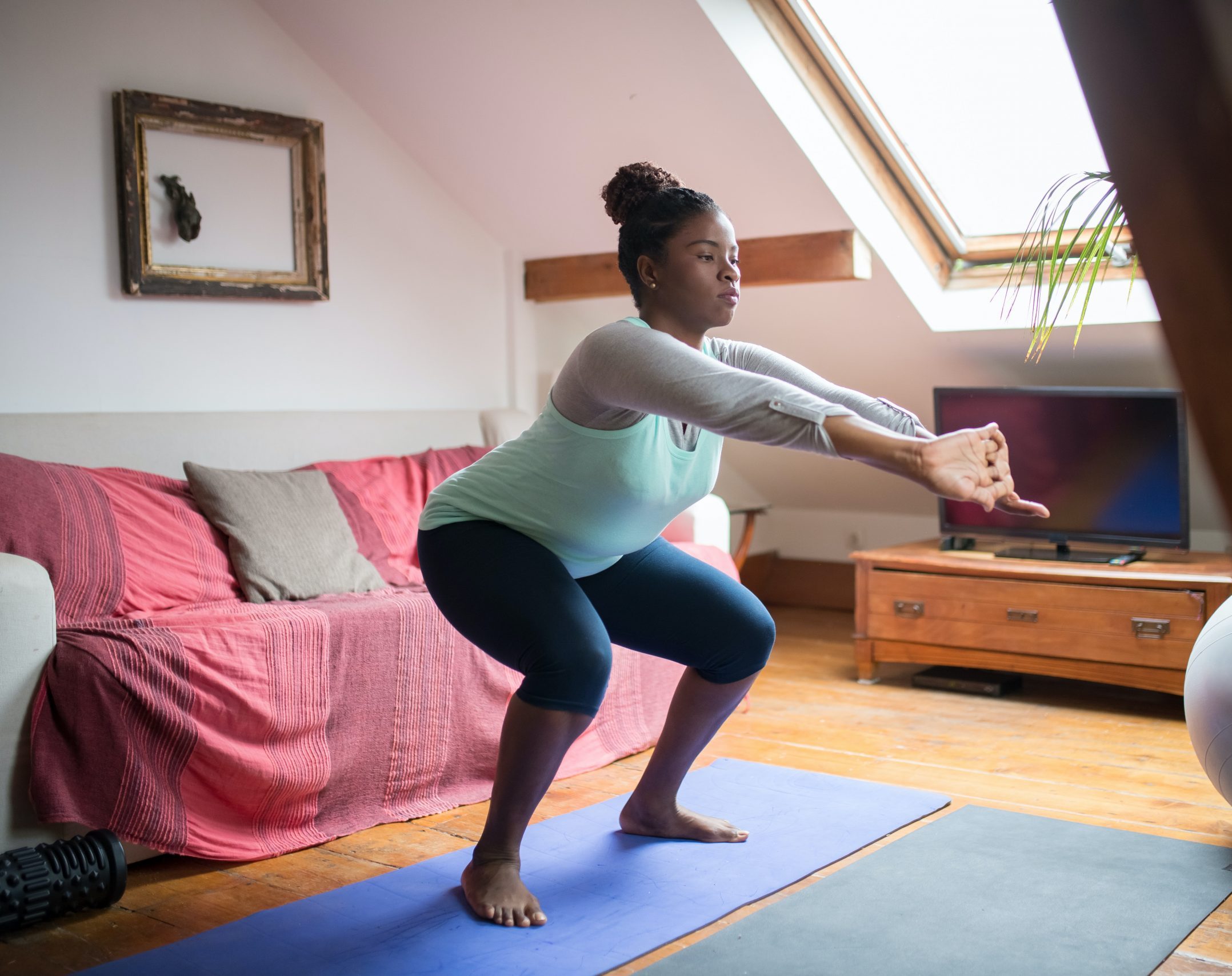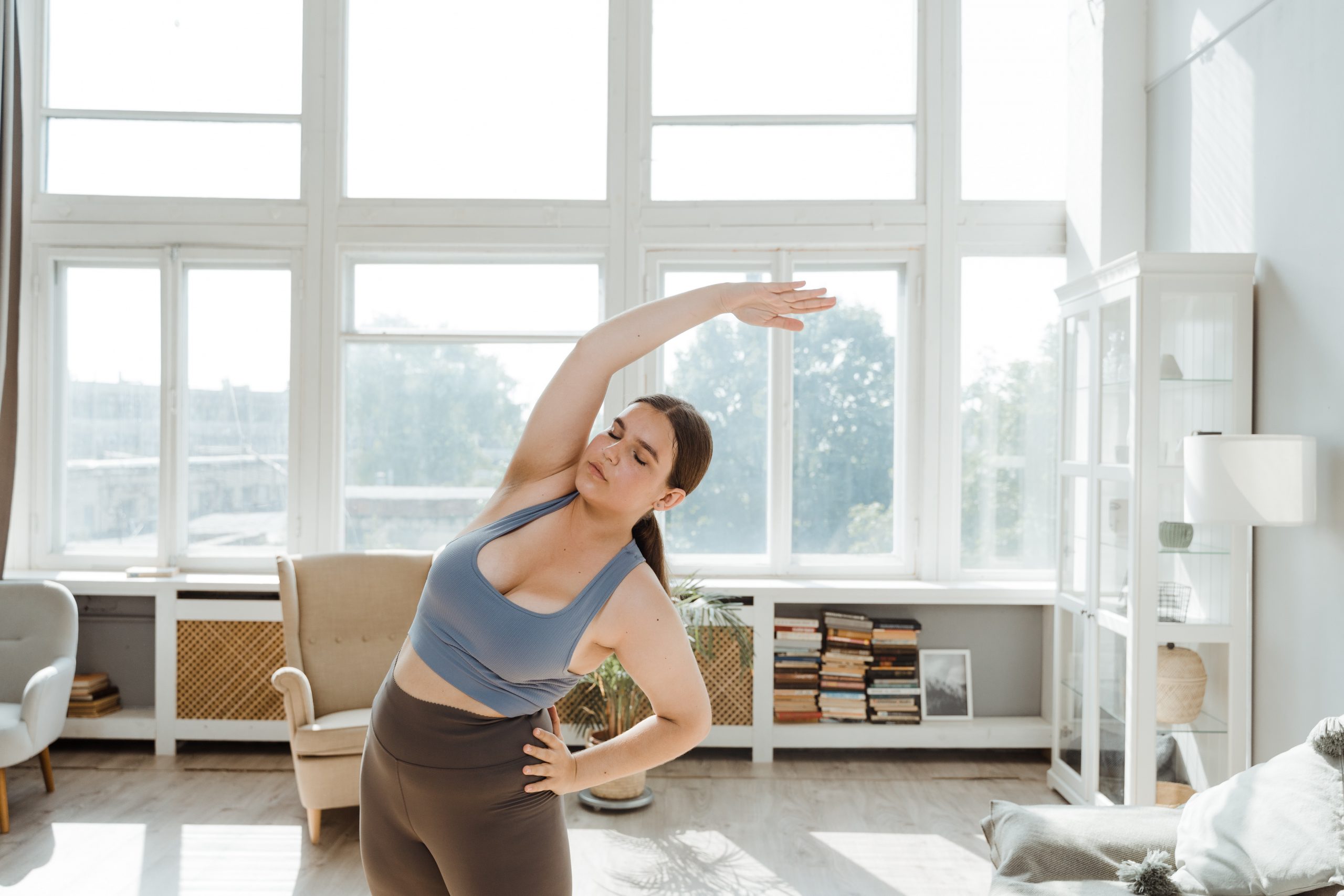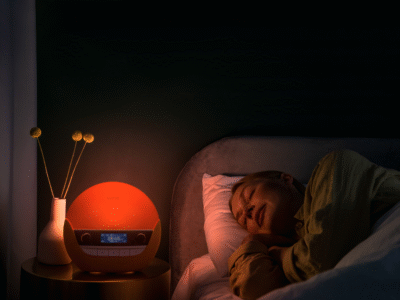Two years into the pandemic, experts say bite-sized workouts are here to stay — and can help repair your relationship with exercise.
While the fitness snacking concept is hardly new — it echoes the patterns of high-intensity interval training (HIIT) — bite-sized exercise has grown in popularity of late as a result of global lockdowns, increasingly sedentary lifestyles and the subsequent boom in digital fitness. Fitness snacking is defined as short bursts of movement interspersed throughout the day (think 30 seconds of walking lunges, 60 seconds of jumping jacks, climbing a few flights of stairs or even dancing to your favourite song) as opposed to working out for 45 or 60 minutes on one go. Basically, if it elevates your heart rate, it counts.

The benefits of shorts bursts of exercise
In a 2020 study assessing the minimum effective training dose, three scientists found performing a single set of resistance exercises, like squats, could be enough to build strength. Published in the Sports Medicine journal, the findings revealed that performing a single set of six to 12 reps, two or three times a week, could lead to ‘suboptimal, yet significant increases’ in strength. Another study, published earlier this year in the Scandinavian Journal of Medicine & Science in Sports, found that students who performed one muscle contraction, such as a bicep curl, for three seconds five days a week, experienced strength gains when compared to students who did nothing.
So, fitness snacking seems to work in terms of improving strength. But it’s better suited to some than others, says Christopher Bryan, a multidisciplinary researcher who investigates stress dynamics across occupational, sport and educational psychology contexts. “This approach can initially be considered valuable for those constrained by time, but when you look a little closer, it’s actually more beneficial to those
who struggle to go from zero to hero when life’s already demanding enough,” he explains.
Andrew Lane, a sport and exercise psychologist at health clinic CHHP London, says: “The task has a clear start and a clear end, so demotivation isn’t an issue — and that’s powerful because many people talk themselves out of exercise.”

The risks that come with short workout sessions
While it’s hard to think of a downside to exercising, as Christopher rightfully points out, the risk of injury can’t be ignored. “Finding new ways to challenge your body will ultimately promote health and longevity, and higher-intensity bursts are part of that. This is where fitness snacking in the comfort of your home could be the shortest route to injury or cardiac arrest. ‘Consult your doctor before exercising’ is a common disclaimer that’s rarely given much thought. However, when you start to participate in a moderate or intense activity, there’s an increased risk — only slight — of a heart attack or cardiac complications.”
It’s important to note that the concept of fitness snacking leaves no room for warm-ups and cool downs, which are arguably vital to staying safe while exercising. And although fitness snacking is a good start, doing just 30 reps or a couple of minutes of exercise isn’t going to be as beneficial for long-term health. The NHS recommends at least 150 minutes of moderate intensity exercise each week and two days focusing on strength, which is said to reduce the risk of heart disease
or a stroke.
Andrew emphasises another major drawback, too. “Alongside the risk of injury, the one big thing lost is social interaction. Think about the start of the London Marathon — you have more than 40,000 people who are nervous and about to achieve something together. You’ll never get that if you have 35 million people simultaneously exercising for 10 minutes, but in isolation.”













